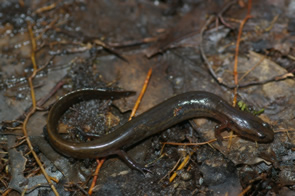
Stereochilus marginatus
Photo by Jeff Hall
Description: The many-lined salamander is a small, slender salamander that has a distinctive small head and short tail. The overall color of the back tends to be dull yellow to brown while the belly is yellow with a few scattered dark spots. Dark, indistinct lines run down the sides of the body but these lines may only appear as a series of dark spots in some individuals. Larvae are clearly dark above and lighter below and have functional legs, unlike many wetland-breeding species. Older larvae appear similar to adults.
Habitat/Range: These salamanders are found in woodland ponds, swamps, ditches, and sluggish streams throughout the Coastal Plain of North Carolina. These highly aquatic salamanders are typically found in dead leaves or debris within their aquatic habitat, but they may occasionally be found under cover objects immediately adjacent to water.
Diet: Many-lined salamanders consume a wide variety of small invertebrates. Despite utilizing the same habitat, there is little overlap in the diets of larvae and adults. Adults tend to consume larger prey items and will periodically forage on land for terrestrial prey.
Reproduction: Many-lined salamanders lay their eggs in and around aquatic habitats during the Winter. Hatchling salamanders emerge from their eggs with external gills and spend 1-2 years as fully-aquatic larvae before transforming into adults.
Miscellaneous: The wetland habitats of many-lined salamanders are rapidly disappearing due to human activities. Although it is unknown how this species is currently faring, the long-term persistance of many-lined salamanders will ultimately depend on the existence of suitable wetland habitat.
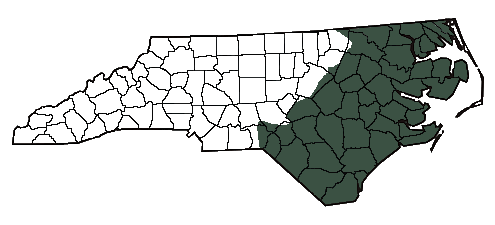
The shaded region represents the range of the many-lined salamander in North Carolina.
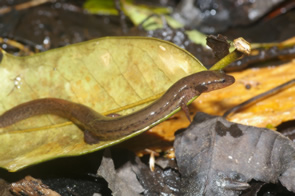
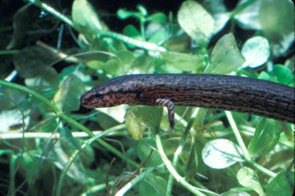
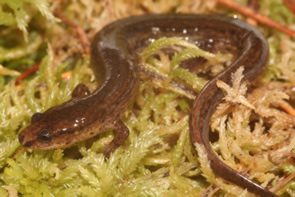
A many-lined salamander underwater.
Photo
by D Dennis
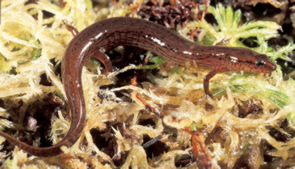
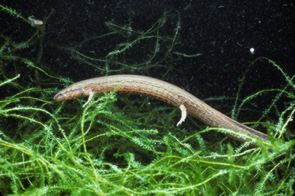
Photo by D Scott
A many-lined salamander larvae.
Photo by D Dennis
